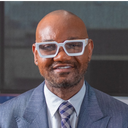Hello,When patients are quoted numbers of grafts a common question is how does a transplant know how many grafts they have harvested? As you will soon learn, 1000 grafts does not always translate to 1000 grafts.1. Hand counter- Some teams will use a hand counter when harvesting via FUE. From our observations, this is rarely done. Below is a picture of a hand counter. When harvesting grafts this is often difficult to do.2. Microscope counter- There is often some trimming that is done by the microscope. This trims the excess material around the graft and allows for the graft to be optimized for the location of implantation. It is really important for patients to not have their grafts split. (insert hyperlink here to graft splitting blog). Splitting is when the team harvests larger grafts (such as 4 hair grafts) and splits them down to 2-4 individual grafts to inflate graft numbers. This way, a team can harvest only 250 grafts and split them into 1000 grafts. The issue with splitting is that it charges patients 4x the amount they should have. This is often why some hair centers will have artificially low pricing and patients are underwhelmed with their results. In strip surgery, grafts can be cut into as many or little grafts along FUE show that again graft numbers can be artificially inflated. show picture of how splitting 4 hairs into 1 can give patients same amount of hair but more grafts3. Software counters- The most accurate method of grafting is the use of technology which counts and automates the process. The ARTAS system has a software counter built in so it knows how many grafts are harvested. This can be helpful for patients who want some means of verification. A screenshot can determine how many grafts are harvested and let patient's know that 1000 grafts =1000 grafts. Show screenshot of artas and number of grafts and maybe video. In our office, we often harvest more than the number of grafts since even with ARTAS, there may be some grafts which have been transected (MUCH lower with ARTAS than handheld).Important considerations:In Chicago, there are some large hair centers who claim to have invented a technique to multiply grafts. In reality, this technique involves splitting grafts to keep hair number the same but to inflate graft numbers.











